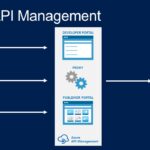Cloud auto scaling systems have revolutionised the way businesses manage their infrastructure, allowing for dynamic resource allocation based on demand. While these systems offer numerous benefits, it is essential to also consider the downsides that organizations may encounter. In this article, we explore the potential drawbacks of cloud auto scaling systems to provide a comprehensive understanding of their limitations.
Complexity and Configuration Challenges
Implementing and configuring cloud auto scaling systems can be complex, especially for organizations without extensive experience in cloud management. The process typically involves defining scaling policies, monitoring metrics, and setting thresholds for resource allocation. Organizations need to invest time and effort into properly configuring the auto scaling system to ensure it responds appropriately to varying workload patterns. Failure to configure it correctly may lead to inadequate resource provisioning or unnecessary costs.
Cost Considerations
While auto scaling systems can optimize resource allocation, they can also result in increased costs if not managed effectively. In situations where workload patterns are unpredictable or fluctuate rapidly, auto scaling may trigger frequent scaling events, leading to additional charges for provisioned resources. Organizations need to carefully monitor and analyse their usage patterns to strike a balance between meeting demand and optimising costs. Failure to do so may result in unnecessary expenditure.
Performance Impact
The dynamic nature of auto scaling introduces potential performance implications. Scaling events can temporarily impact the performance of applications or services as new instances are provisioned or decommissioned. It is crucial to design applications with scalability in mind to ensure that they can handle the dynamic nature of auto scaling without compromising performance. Proper load testing and performance tuning are essential to minimize any negative impact on end-users during scaling events.
Application Compatibility and Dependencies
Some applications may not be inherently compatible with auto scaling due to dependencies or architectural limitations. Applications with stateful components, such as those relying on local file systems or session affinity, may require additional considerations or modifications to function optimally in an auto scaled environment. Organizations need to evaluate the compatibility of their applications with auto scaling systems and make necessary adjustments to ensure seamless operation.
Monitoring and Debugging Complexity
With auto scaling systems, monitoring and debugging can become more complex. As the number of instances dynamically changes, organizations need to adopt comprehensive monitoring practices to gather performance data from all instances and identify potential issues. Debugging can also be challenging, as issues may arise in specific instances during scaling events. Robust monitoring and logging mechanisms, along with proper debugging tools, are essential for effectively managing auto scaled environments.
Vendor Lock-In
Adopting a specific cloud provider’s auto scaling system may result in vendor lock-in. Migrating to a different provider or integrating with other systems can become challenging if organizations heavily rely on provider-specific auto scaling features. Organizations should carefully evaluate the long-term implications of vendor lock-in and consider the portability and interoperability of their auto scaling systems.
Conclusion
Cloud auto scaling systems offer tremendous advantages in terms of resource optimization and flexibility. However, it is important to recognize and understand the potential downsides associated with these systems. Complexity in configuration, cost considerations, performance impact, application compatibility, monitoring challenges, and vendor lock-in are all factors that organizations should carefully evaluate when implementing and managing cloud auto scaling systems. By proactively addressing these challenges, organizations can make informed decisions and optimize the benefits of auto scaling while mitigating potential drawbacks.








